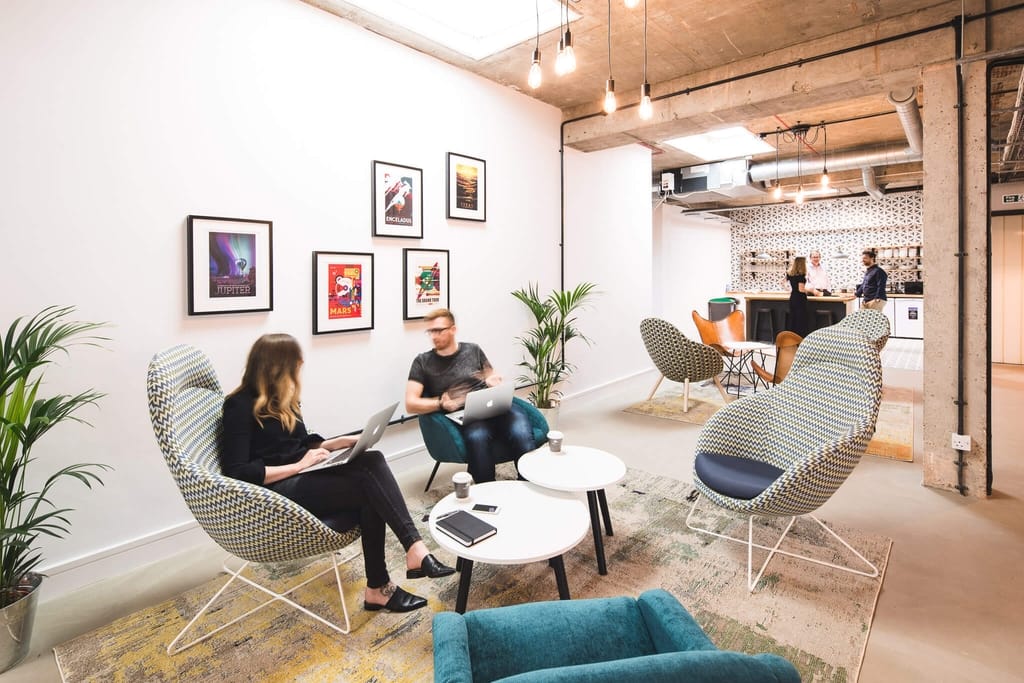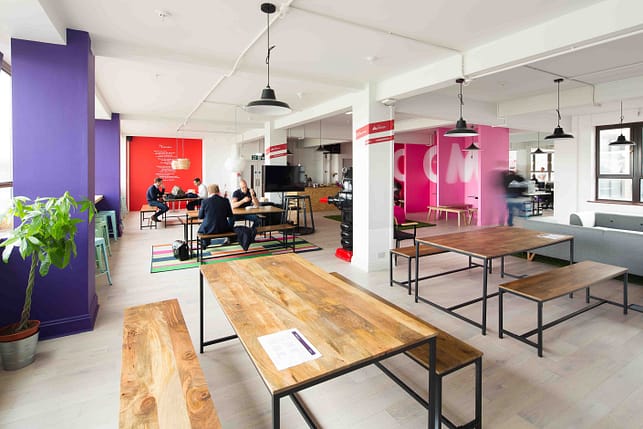A Tailored Approach to Workplace Design
from Office Profile in Manor Royal
When people think of office design they used to think of the layout; how many desks there are going to be; creating a practical space that is efficient in both financial terms and in terms of productivity. We look at a tailored approach examining the importance of social spaces and collaboration in creating a more human-centric workspace design.
We have all seen the headlines: workplaces have changed more in the last 2 years than it has in the past 25 years but, there is still a way to go. The industry has been pushing for change and the thought of a more human-centric approach to workplace design (as opposed to purely floorplan/budget-led) is appealing for all.

One of the ways workplace design has changed is the rise in hybrid working, a word you have surely heard thrown around. It is what it says, it is a flexible working pattern incorporating HR policies, technology and collaboration, largely born of the advances in technology and how they have been integrated into the modern workplace to facilitate the users to work in different ways. It is focussed on the individual within a workplace. If you want a more in-depth explanation of what Hybrid Working is and where the industry is headed, read our blog by Angi, our Office Profile Project Director.
Alongside a hybrid working pattern the industry has shifted its view that social spaces should be sectioned off from the office, to being possibly one of the most important spaces within the workplace – essentially, the “beating heart” of the organisation. Location and access to the facility becomes even more important.
Humans are Social Creatures
Derived from pack animals, humans are innately social; we love to fit into a community and seek them out and, we thrive off the connections we make. Although technology has come a long way in terms of connecting us, things like Teams calls, Zoom, and now the emergence of the ‘Metaverse’ VR, you still just don’t get the same level of interaction you would have face to face. These new tools do offset the negative effect that not socialising can have on wellbeing but, the truth is, without meaningful conversations on these applications it will not help that much. Connecting is all about the quality of the connection and not the quantity.

Although, using technology is much less likely to give meaningful connection, an office could still hinder connection, you might be sat with 10 other employees and have many conversations without meaning which could leave you feeling depleted by the end of the day. This example underlines the fact that we now see more introverts in the workplace than we may have seen decades ago – before email, and other ways of communication that potentially diverts from face-to-face activity. How often have we seen people literally sat next to each other, using email to communicate rather than speaking?
This is why it is vital to a workplace, employees and employers to have a social space that facilitates meaningful connections and not just work-related communication.
How can we Connect?
As touched on previously, social spaces have become an integral part of the office and are no longer just separate spaces to eat in. In a modern working environment, it is important to make these spaces the heart of the office.
Depending on the office size, there are many ways you can create a fantastic social zone. Offices should consider not having walls around the space to integrate it into the workplace. Tea-points should be interlaced within the space too, many of us have experienced a ‘collision meeting’, and encouraging them to happen is best for wellbeing and for idea generation, and what better way to do this than to install them in spaces that are easily accessible by all. There are a number of simple design elements that can be merged into the scheme to facilitate and enhance the chances of a collision meeting happening.

How does this link to Hybrid Working?
You may be wondering where hybrid working comes into a social space. The bottom line of hybrid working is looking at the individual and social spaces is all about individuals together whilst ensuring that all personality types are catered for. As part of the design, you must not only consider what the space is being used for but more importantly, why employees need the space.
For example, how many people will be coming into the office and how often? Will there be 30 people in at one time or only 10 at a time? Is this space used for lunch breaks only or for collaboration too? Speaking to HR will allow you to consider these factors alongside others too, if your workforce is full of 20 somethings in their first role, will they want a different social space to workforces with experienced staff? Will the sales team expect a different social space to accounting? Getting under the skin of the organisation, understanding the roles the different teams undertake, and what the business drivers are for change are all carefully examined and taken into consideration when designing for each individual project. There is no “one size fits all” solution!
The social space is all about making it suit the employees needs to help wellbeing, boost company morale through connections, boost creativity and innovation and give staff the chance to take a breather from their busy workday.
Date Published: 28/07/2022